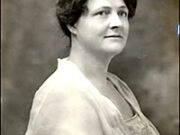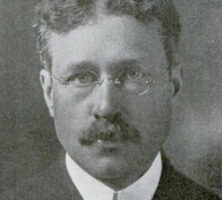The Commission on Interracial Cooperation (CIC), founded in Atlanta in 1919, worked until its merger with the Southern Regional Council in 1944 to oppose lynching, mob violence, and peonage and to educate white southerners concerning the worst aspects of racial abuse. The commission remained based in Atlanta but had state-level committees throughout the South and, in the 1920s, some 800 local interracial committees. Key leaders included Will W. Alexander, executive director; Jessie Daniel Ames, the longtime director of woman’s work; Arthur Raper, research director; and Robert B. Eleazer, director of education.
Early Years
The commission grew out of the activities of several organizations, including the Atlanta Christian Council and the YMCA War Work Council (headed by Methodist minister Will Alexander), which sought to lessen racial tensions at the end of World War I (1917-18). After meetings among interested constituencies, the CIC was established early in 1919, with Alexander as the executive director and the Atlanta industrialist John J. Eagan as president. Within a few months CIC organizers invited five Black leaders, including the president of Morehouse College, John Hope, to join.
In 1921 the organization established a Women’s Committee, under the leadership of Georgia’s Carrie Parks Johnson, chair of the Race Relationships Commission of the Southern Methodist Church. Such influential African American women as Atlanta reformer Lugenia Burns Hope, wife of John Hope, were integral to the founding of the committee.
For each southern state the commission hired field workers who assisted local interracial committees in addressing their communities’ specific needs. In Atlanta, for example, the CIC worked to improve African American schools and services, opposed such white supremacist organizations as the Ku Klux Klan and the Order of Black Shirts, and fought racial injustice in law enforcement and the courts.
The CIC did not attack segregation, believing that its most effective strategy was to bring together the “best people” of both races to discuss racial problems. With most of its funding coming from northern philanthropies, CIC leaders were able to adopt cautiously liberal goals. Neither its funding agencies nor most CIC members, however, would have condoned any actions perceived as radical.
New Directions after 1930
By 1930 financial troubles occasioned by the Great Depression led CIC leaders to reevaluate their programs. Expensive fieldwork was largely abandoned in favor of research and educational activities. The Rosenwald Fund provided funding for the Southern Commission on the Study of Lynching to investigate all lynchings that occurred in 1930 and to suggest methods for eliminating the brutal practice. Arthur Raper, the commission’s chief investigator, published the results in his book The Tragedy of Lynching in 1933. Jessie Daniel Ames established the Association of Southern Women for the Prevention of Lynching, an organization of southern white women who pledged to combat lynching in their own communities. The Carnegie Foundation funded the Conference on Education and Race Relations, under the direction of Robert Eleazer, to develop course materials and hold summer workshops to encourage the teaching of race relations courses in southern high schools and colleges.
Yet another new initiative, a “special committee” to “further the interests” of African Americans in New Deal programs, resulted from a Rockefeller Foundation grant. Will Alexander successfully lobbied for the inclusion of minority advisors in New Deal agencies and sought to have federal officials address the problems of farm tenants. Alexander collaborated in the publication of The Collapse of Cotton Tenancy (1935), a critique of federal agricultural policies that made a plea for long-term loans to enable tenants to buy land. When the Farm Security Administration was established in 1937 to administer such a program, Alexander became its head. In A Preface to Peasantry (1936), Raper documented the effects of the depression on rural life in Georgia’s Greene and Macon counties.
Organization of the Southern Regional Council
Though Alexander remained director of the CIC during his time in Washington, D.C., Jessie Ames assumed day-to-day management of the organization in Atlanta. In 1937 she began to revive interracial committees and eventually began publication of a monthly newsletter, The Southern Frontier. Alexander and the University of North Carolina sociologist Howard Odum, then president of the CIC, disagreed with her initiatives, believing that these familiar strategies were no longer effective. Odum, an influential advocate of regional development, and Alexander believed the CIC should evolve into an organization dedicated to studying and addressing the South’s economic difficulties. Racial problems, they argued, could best be remedied through improving economic conditions for all southerners.
A series of conferences in Atlanta; Durham, North Carolina; and Richmond, Virginia, led to the formation in 1944 of the Southern Regional Council, based largely on Odum’s ideas. Many leaders in the interracial movement agreed that the CIC’s programs were outmoded and supported its merger with the Southern Regional Council. The CIC had nonetheless helped to prepare the South to enter a new and challenging phase in the movement toward racial justice.






